![]()
The Paris of 1636-1643 was a very different city from the one we know today, but fortunately a number of maps and engravings have survived to give us a clear picture of the older time.
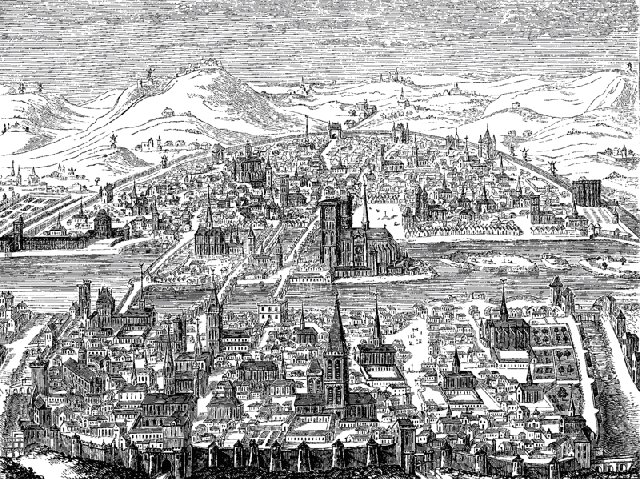
Perspective view of Paris in 1607 from a copperplate by Leonard Gaultier. (Source: Wikimedia Commons)
The Hôtel de Roland was, as Anne tells us, in the ‘Marais’. The word originally means ‘marsh’, but by the 17th century the Marais was the grandest part of Paris, the Mayfair of its day, and it is here almost all the great townhouses of the nobility could be found.
The information in In the Name of the King allows us to pinpoint its location more precisely. Its frontage is on the Rue de Roi de Sicile, and Jacques’ references to roses on the wall suggests it backed onto an alley running from the Rue des Rosières. A look at the Rue des Rosières even today shows us how narrow it was, and how easily a running man might feel trapped between those intimidating high walls.
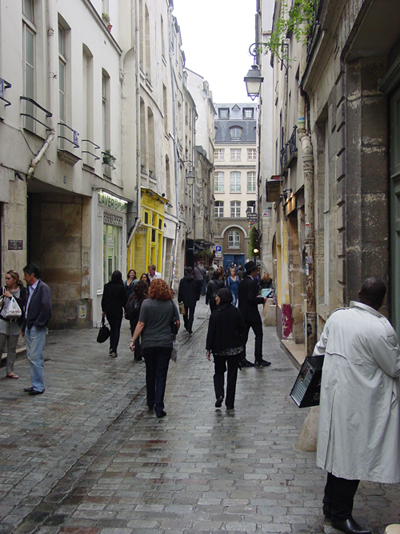
In this photograph by A.L. Berridge we can also see the central gutter which was common in the 17th century, whereby the effluence was drained into the middle of the road rather than away to either side
Modern visitors can see a glimpse of both 16th and late 17th century life in the great Hôtels by visiting the Musée Carnavalet in Paris, which has combined houses of both period, the later of which was owned by the famous letter-writer Madame de Sevigné herself.
This photograph, taken on a recent visit by A.L. Berridge, show the all important porte-cochère, a gate wide enough to permit the entrance of a carriage onto the essential cour d’honneur, as well as the formal garden lay-out of an inner courtyard.
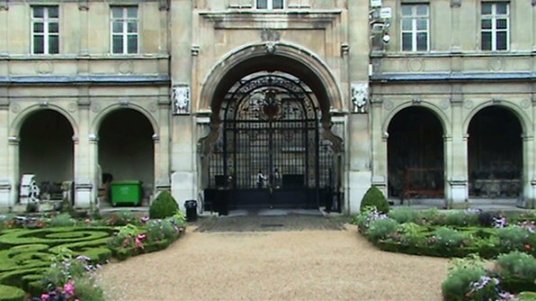
The ‘sky salon’ as described by Anne in Honour and the Sword, while impressive, seems not to have been unusual in the period. The artist Rémy Vuibert, for instance, who designed the magnificent ceiling of the nun’s choir at the Couvent de la Visitation was working at this time, and the ceilings in Versailles created under Louis XIV must be seen to be believed.
Anne herself apparently lived in the Place Dauphine, which seems highly appropriate to her father’s role as a financier. A high class ‘estate’ on the Île de la Cité, the Place Dauphine could not attract ‘real’ nobility of the old kind, who needed more space for their carriages, but was highly desirable property for the nouveau riche, such as bankers or aspiring members of the noblesse du robe.
This how it appears in the 1653 Map de Mérien (number 466 is the Place Dauphine):
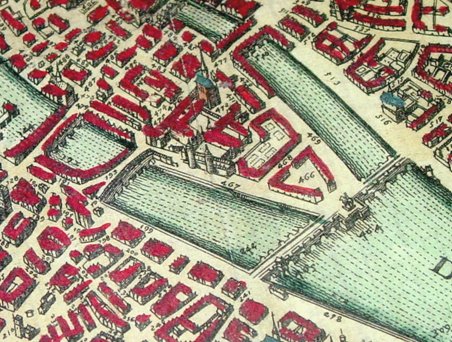
And in a modern photograph by Jacques Mossot:
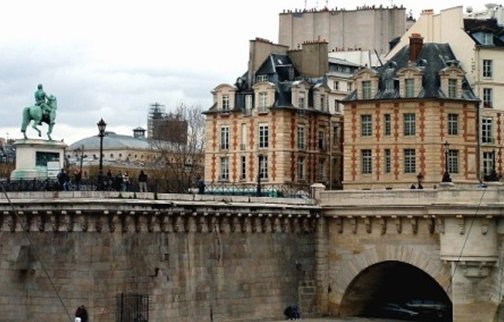
(Photo Jacques Mossot, Structurae)
Both maps and picture show how short a walk it was from Anne’s house to the Pont Neuf, as described in chapter 28 of Honour and the Sword, where she saw ‘two painters squabbling beneath the statue’. This, of course, would have been the statue of Henri IV, which is placed directly opposite where the Place debouches onto the bridge, as shown in these recent pictures taken by A.L. Berridge.
View from Place Dauphine onto Pont Neuf:
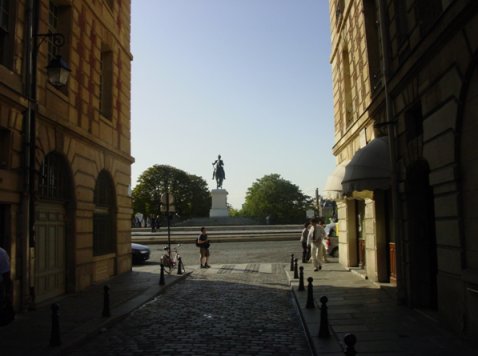
View looking back onto the modern Place Dauphine:
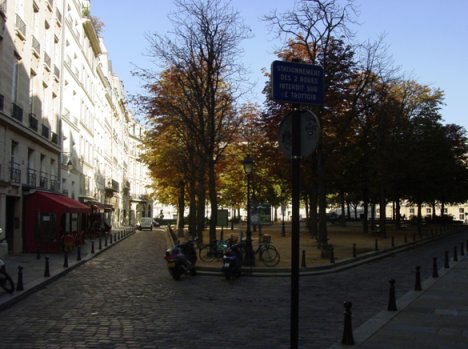
The location is even more crucial in In the Name of the King, and this 17th century engraving by Chastillon shows us how Ravel could have stood at the statue in order to observe through which porte-cochère Bouchard entered. It also makes clear the position of those all-important steps down to the Seine, which had such a vital part to play in the escape that followed.
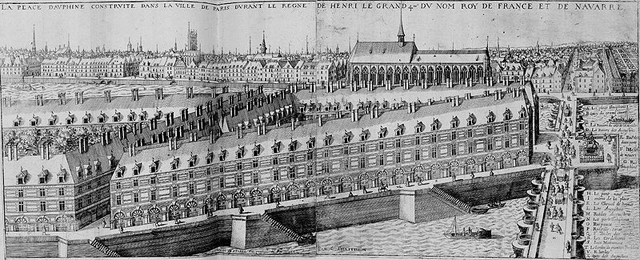
Flower-sellers such as Anne refers to in Honour and the Sword are still a common sight to this day, but the water-vendor she mentions has long since disappeared with the rest of his kind. These were essential in a city where river water needed to be filtered through several layers of sand before it became even remotely potable, and wells were not a luxury available to all.

But there is more to the Île than the Place Dauphine, and one of the most significant encounters in In the Name of the King takes place at the parvis de Notre-Dame, the courtyard in front of the cathedral where André fights his first duel. This, of course, is how it looks today:
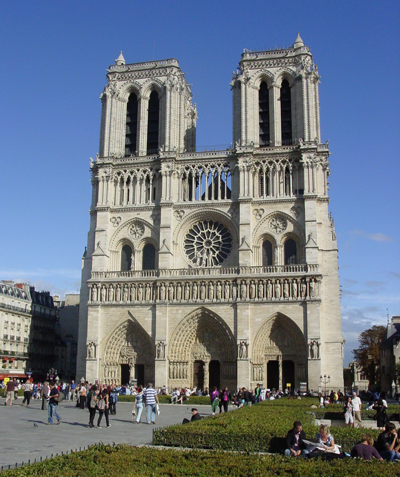
I confess I was puzzled by Anne’s reference to the ‘parapet that divides the parvis’, since there is no such wall now, but this 17th century engraving shows that it did indeed exist at the time:
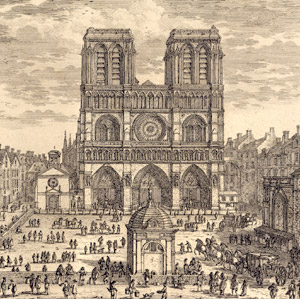
Since both André and Bouchard jump over this wall in order to fight, it seems likely that it marked the separation between church land and common ground.
Elsewhere in Paris, the Comtesse de Roland suggests Anne accompany her to the famous salon at the Hôtel de Rambouillet, where Jacques himself is later to have an unfortunate encounter with Bouchard in In the Name of the King. The Hôtel, then situated on the Rue Saint-Thomas-du-Louvre, was unfortunately demolished in the modernization of the 19th century, but a 1643 engraving shows us what it looked like only four years after Anne first visited:
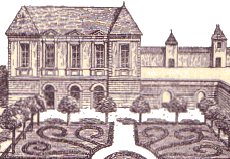
Again, the formal lay-out of a miniature parterre is clearly visible, as at the Hôtel de Carnavalet.
But not everywhere in Paris was so inviting. Perhaps the most important location in In the Name of the King is what was then known as the ‘Place de Grève’, the open space in front of the French Parliament Building now known simply as the ‘Place de l’Hôtel de Ville’. In the 17th century this was still the site for executions and public punishment, and Victor Hugo spoke rightly when he described it as "the symbol of medieval and ancien régime justice: brutal, corrupt, and inadequate."
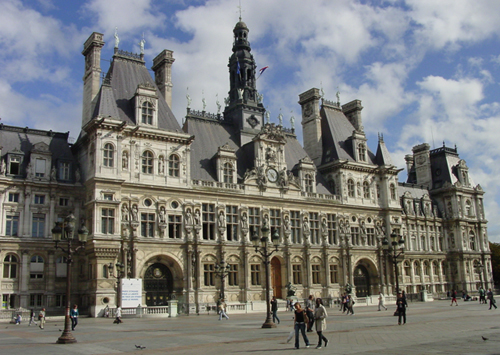
The Hôtel de Ville itself has changed little since those days, but the original oak doors have been replaced, and I had to travel to the Musée Carnavalet to see the one which Jacques described as having ‘all carved panels on it, like pictures in thick frames hung on top of each other on a wall’:
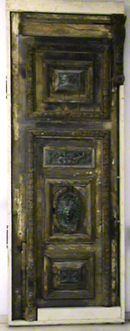 |
He would not have been the first to stare at this door in agony of mind, nor was he to be the last. Paris is a beautiful city, arguably the most beautiful in the world, but like London, its history speaks not only of culture, but also of a past of almost unimaginable violence. |

